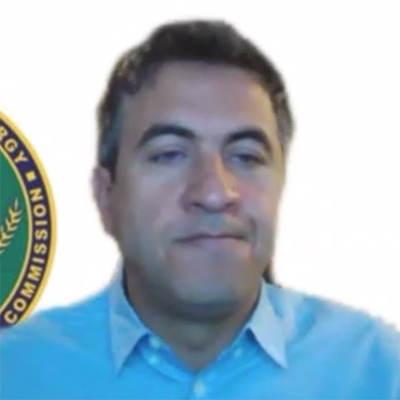The California Air Resources Board has released a draft plan for the state to reach carbon neutrality by 2045, tentatively rejecting alternatives that would achieve the net-zero goal 10 years sooner.
CARB released the draft climate change scoping plan on Tuesday and has scheduled a public hearing on the plan on June 23. Written comments are due by June 24.
The agency expects to adopt a final scoping plan by the end of the year.
The scoping plan is a roadmap for the state to meet greenhouse gas reduction goals. State law requires a scoping plan update every five years; the last update was in 2017.
In its process for developing the scoping plan, CARB analyzed four different scenarios. Alternatives 1 and 2 would bring the state to carbon neutrality by 2035, while Alternatives 3 and 4 would reach the target in 2045.
The alternatives differ in other key areas, including the rate of consumer adoption of clean technologies; reliance on carbon capture and sequestration (CCS) and CO2 removal; and the remaining demand for fossil energy after carbon neutrality is reached.
Choosing an Alternative
The draft scoping plan proposes moving forward with Alternative 3.
“It is the proposed alternative because it best achieves the balance of cost-effectiveness, health benefits and technological feasibility,” the draft plan states.
With its extra 10 years to achieve carbon neutrality compared to Alternatives 1 and 2, the proposed alternative provides more time for technologies to scale up and be deployed at lower costs, according to CARB.
The proposed alternative would reduce petroleum usage by about 90% by 2045 and achieve a state target of reducing GHG emissions 80% by 2050.
In comparison to Alternative 4, the other scenario with carbon neutrality in 2045, the proposed alternative includes a faster adoption rate of clean technologies and less reliance on CO2 removal.
The most aggressive of the scenarios is Alternative 1, which would nearly eliminate fossil fuel combustion by 2035. The alternative would require early retirement of millions of gasoline- and diesel-powered vehicles as well as natural gas appliances.
Alternative 1 has a limited reliance on CCS. It would include direct regulation of dairies to reduce methane emissions.
The scenario has the highest direct costs of the four options and would cause the most slowing of economic growth, according to CARB’s analysis.
Alternative 3 would have the least impact on employment and economic growth among the four options, the draft plan said.
CARB’s board has the option to choose another scenario. The board could also keep the proposed alternative but incorporate elements from other scenarios.
Sector Specific Strategies
CARB said the most significant part of the draft plan is the aggressive reduction in the state’s fossil fuel reliance. That would be accomplished by building on existing strategies, including regulations, incentives and carbon pricing.
And the 2022 scoping plan differs from previous plans in its focus on “the accelerated rate of deployment of clean technology and energy within every sector,” the agency said.
The draft scoping plan details carbon reduction strategies in several key sectors.
In the transportation sector, the plan includes a transition to zero-emission vehicles while ensuring there’s enough zero-carbon alternative fuel for the vehicles. To achieve the latter, the plan proposes incentivizing private investment in new zero-carbon fuel production in the state and looking at options to increase the stringency of the low-carbon fuel standard.
The draft scoping plan also envisions a 22% reduction in vehicle miles traveled by 2045 compared with 2019 levels.
In the electricity sector, decarbonization strategies include addressing challenges to resource buildout, such as permitting, interconnection and transmission network upgrades.
The draft plan proposes exploring rate designs to increase affordability and continuing to look at the benefits of regional markets.
Another strategy proposed for the electricity sector is use of incentives and other programs to improve disadvantaged communities’ access to renewable energy projects, such as rooftop and community solar, battery storage and microgrids.
In addition, the plan proposes to evaluate the cap-and-trade program, with changes to strengthen the program if needed.
Adoption of the 2022 scoping plan is just “the beginning of the next phase of climate action,” according to CARB.
Approval of the plan will lead to the development of new regulations or strengthening of existing programs and regulations, the agency said. The changes will take place at CARB and at other state agencies.
“The unprecedented rate of transition will also require identification and removal of market and implementation barriers to the production and deployment of clean technology and energy,” the draft plan said.

